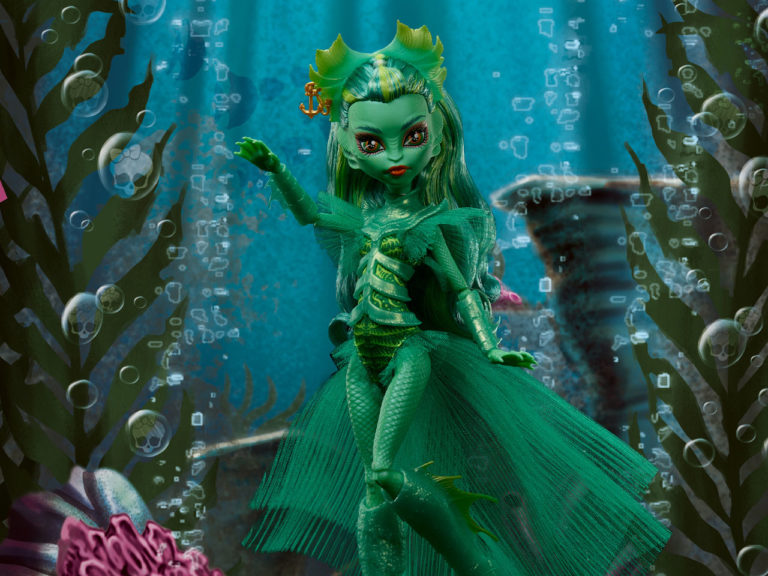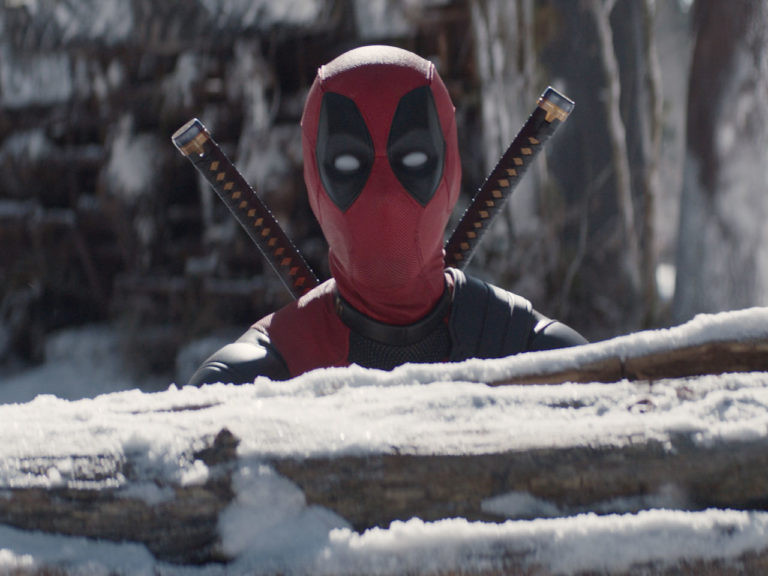
Batman #41 is the first chapter of the three-part arc, Everyone Loves Ivy. The premise of the arc is that Poison Ivy, through the elemental force of the Green, enthralls the entire planet, including the Justice League. The stakes are high and only Batman and Catwoman have found means to stay out of Ivy’s control. This issue also sees the return of artist Mikel Janin to Batman, and the man provides stellar artwork as always. As for Tom King, in my opinion he has been rather hit or miss over the course of his run, and so, with such high stakes and only three issues to sell such a grand story, the question becomes, is this another miss or a hit?
EVERYONE LOVES IVY
Part One
Tom King (Script)
Mikel Janin (Art and cover)
June Chung (Colors)
Clayton Cowles (Letters)
Tom King is the type of writer that tends to shift the focus toward theme rather than the actual plot. For example, back in I Am Suicide, Batman was charging at an army of gunmen, who opened fire on him. This speaks more to the idea of Batman being this resilient, unstoppable force than it depicts a realistic fight scene, and it is this theme that is further expanded on as the story in I Am Suicide develops. Additionally, often events take place outside of the story, so that there is more room to develop thematics. This issue, however, reads to me like King has found a nice balance between theme and plot, and it is a welcome change of pace. King still writes short sentences, still uses captions that are parallel to panels, but there seems to be less repetition in dialogue. As always with King, you don’t know what you are reading until you’ve reached the end of the story (although even then it’s still ambiguous at times, leaving plenty of room for interpretation). In this particular story, King also throws in a few plot twists along the way, and it makes for an entertaining and exciting reading experience.

This issue in particular is very dreamlike in its structure. Seeing as I have a fascination with dreams, I always find it interesting when writers incorporate such elements in their work. The story also has a rather psychedelic aesthetic because there is a lot of trippy organic material on display. More specifically, some of the panel borders are actually replaced with vines running across the page, and this fits the theme of Poison Ivy very well. Furthermore, she is the type of character that puts her victims in a trance. Therefore it is fitting that, at the start of the story, we first see a full page panel devoted to Ivy. It is like the world around her is an extension of her, as she’s surrounded by vegetation that matches her dress and green eyes. It is almost like she is approaching the reader, and the captions that run across the panel seem to address the reader as well. On the next page, Bruce wakes from a slumber and instantly has an expression of shock on his face. He is sweating all over, and hastily he gets out of bed and starts to run toward the cave. Clearly, something is amiss and he knows that he has to act fast.
As the story continues, nothing is what it seems. Characters that Bruce encounters at first seem to behave like their normal selves, only to sneak up on him with mischievous intent, or even holding a batarang behind their back to try and sneakily stab him. Meanwhile, Bruce continues to sweat throughout the pages, and in fact has a moment where he falters. Clearly, he’s fighting against Ivy’s control, while all the world around him is falling prey to her—a testament to Bruce Wayne’s iron will. As he struggles to make his way to the Batcave to retrieve means to counter Ivy’s psychedelic offense, Ivy’s voice continues to speak in captions, showing us what Bruce is hearing in his head and trying to resist. What is so strong about this passage is that it shows how powerful Poison Ivy can be as a villain, and after having seen Bruce going toe to toe with Bane, as well as him fighting in the War of Jokes and Riddles, I think it’s very refreshing to see him locked in a battle of the mind this time. However, the way that this is written also raises several questions. First, Ivy states very clearly what she wants (or rather, what she has already acquired) to Bruce, but it is not exactly explained why she wants this. She says that she wants to make the world a better place, and while the meaning of this might seem obvious to long-time Batman readers, King does not further elaborate on what “a better place” entails for new readers. Besides, it could even be that King implies something else than what many Batman fans might assume. I would have appreciated it if King stated Ivy’s mission more clearly, just to cover this hole in an otherwise excellent narrative. Second, if Ivy is controlling the world through the Green—7.6 billion people, as King writes—then where is Swamp Thing in this story? I wonder if he will make an appearance at some point, especially considering Batman and Swamp Thing already had an encounter in Batman #23. But more importantly, Swamp Thing is the avatar of the Green, and so if Ivy starts to abuse the Green like this, I imagine Swamp Thing wouldn’t simply ignore it.

Now, let’s zero in on the idea that she’s controlling 7.6 billion people for a minute. The implication is that Ivy apparently can control the entire world. Not only does this mean the Justice League or the Bat family, but it also means all of the villains. Bane. Joker. Lex Luthor. Just to name a few. My question now is, why is Ivy made so powerful? To me it seems like she is now literally the single most dangerous villain on the entire planet, and I wonder if that is really what the character needs—or what the story needs, for that matter. As I said, King has only 3 issues for this arc, but the threat level might warrant more. And, beyond this, Ivy’s powers are very similar to those of another villain’s, namely Jervis Tetch, the Mad Hatter. Of course, Ivy’s powers come from the Green and are centered around love, albeit a twisted love. But while she’s always been able to make others fall in love with her and do her bidding, this time she’s in fact capable of full mind control. And not just with a handful of people, but the entire human race. While I personally think this makes her a terrifying villain, it is a break from how the character is usually written. Now, just because we already have Mad Hatter doesn’t mean Ivy isn’t ever allowed to use mind control. But at the same time I feel that at least this story could be taking place at a much smaller scale. I also think there should be some repercussions for Ivy. For instance, does controlling the entire world drain her energy at all? How long can she keep this up? For these reasons I think King has gone somewhat overboard with his depiction of Poison Ivy, as he is turning her into a goddess instead of having her be one of Batman’s many rogues. Then again, we will have to see how the story develops from here, because for all I know King is going to conclude this beautifully.
What’s more, a lot of care is put into the pacing of the issue. The first half of the comic, where we see Bruce struggling to get to the Batcave, builds up to a climax where Bruce only just manages to use an antidote against Ivy’s influence. Bruce then passes out, and we are presented with a jaw-dropping double page spread depicting all kinds of characters, from Superman and Wonder Woman to citizens to even Donald Trump (although his back is turned on us, contrary to all other characters, but his ridiculous combover and body language give it away). All of these characters are saying “I love you,” which shows to us that Ivy indeed has control over them.
This is followed by a full page close up of Ivy, staring right into our souls with an arresting look to her green eyes, echoing the full page illustration of her on page 1, although, this time, there is no external world around her anymore. This time, she is the world. It could even be interpreted as us, the audience, literally entering into her world through her eyes. And this marks the halfway point of the issue. From here, things get rather trippy and strange. Just as the panel of Ivy echoes the earlier one, we see Bruce waking up in bed almost exactly like he did at the start. The difference is, however, that he is wearing the Bat-suit (except for the cowl), and he doesn’t appear as distressed as before, but more collected and focused on what is going on around him. Then the story once more starts building up to a climax, but the events all seem out of place. I’ll provide an example in the spoiler tag.
As for the writing in general, I think King has managed to write a concise episode, with captions that are married to the artwork, a rather plot driven narrative, dialogue that is to the point and entertaining to read and fun plot twists along the way. The end is also likely to spark yet another discussion among fans of the Bat, while at the same time hammering home how dangerous and nearly impossible to beat the current threat is. It seems we’ll also, once again, see Batman and Catwoman fighting side by side in the subsequent chapters of this arc. We already saw them fighting together in Batman #33-35 against Talia. But in particular #41 feels like a logical follow-up to the conclusion of Batman #40, where the two of them explicitly decided to fight together against overwhelming odds next time they arise. Of course, that was within the context of the Gentle Man, the demon realm and the Batman/Wonder Woman team-up. But thematically, the odds in this story are overwhelming as well, and Batman and Catwoman are the only ones not in Ivy’s control. In that sense, this could be read as a spiritual and thematic sequel to Batman #39-40. Lastly, if you’d like some elaboration on the ending itself, it’s in the spoiler tag.
Moving on to the artwork, Janin once more draws a gorgeous book. This guy is a master storyteller, and his work is incredibly detailed. Besides the spectacular renditions of walls of vegetation, I find his faces especially striking. Take for instance the look of shock on Bruce Wayne’s face when he wakes up, realizing that Ivy is in his head. Then the constant focus on his face as he mentally battles her, and emotions on various characters’ faces. He is also, as always, consistent when it comes to character designs and bodily proportions. Furthermore, he draws an absolutely gorgeous Poison Ivy, who is very attractive and yet classy. His version of Ivy also appears more human than some other artists sometimes draw her. For instance, she does not have green skin. I must say I very much prefer this more human depiction because firstly, it opens up more story possibilities as the character can more easily blend in with society. See Poison Ivy: Cycle of Life and Death for a nice, recent example. Secondly, I’ve always liked the idea that, on first glance, you won’t be able to tell that she is a villain. You’d think she’s a very pretty woman, almost innocent-looking, until suddenly plants start growing all around her and you walk right into a trap. I feel like the green skin already gives too much away in that sense.

Then there are the double page spreads, especially the ones where we see a lot of vegetation, are layered and make for interesting study material. Take for instance the two page spread where we see Ivy sitting on a throne of plants. Ivy’s posture is majestic, like a queen, and her hair is a crown of red. But now look at all the plant life around her. It’s all in motion, all alive and vibrant. And the more closely I look at this image, the more details I begin to make out, the more different plants I see, even hidden far in the background. Everything here is fractal (a self-repeating pattern, often found in nature), and it’s just amazing.
June Chung provides excellent colors on top of Janin’s pencils. The main color schemes he works with are green and red, which are of course Ivy’s themes. During the first half of the story, he also makes use of darker tones, a lot of purple and darker shades to emphasize this is all taking place at night in the manor. In the Batcave, the main theme is light-blue, as the Batcomputer emanates a hue of that color. But he can also be very subtle. In line with the main theme of green and red, there is a moment where we see a possessed Catwoman, and besides her eyes being green, her sharp fingernails are painted red—a visual confirmation that Ivy is inside of her mind as well. In the second half of the book, in Bruce’s bedroom, there are green curtains and the wall has a reddish tone to it. There’s also a character in a red outfit. But it is especially in the amazingly detailed double page spreads that Chung shines. Where Janin makes the plants come to life by drawing them in detail, Chung adds even more to that lifelike quality by making the colors pop. Looking at the spread where Ivy sits on her throne, it even triggers a sense of synesthesia with me: the plants are so green and overwhelming, that I can just about smell them. In my opinion, the visuals inside this comic have been the best so far on the Batman title. Clearly, a lot of effort is put into this and the quality is high.
Recommended if…
-
You love Ivy!
-
You like detailed and layered artwork, and especially can’t get enough of Janin
-
You are into psychedelic and trippy stories with fun plot twists
-
You like to witness a true mental challenge for Batman to overcome
Overall: This is a good comic. The themes are fun to analyze and the artwork is worth studying. But besides that, the book is also highly entertaining. The story is well-paced, not too fast and not too slow, and enough happens to keep you turning the page. It also has a clear structure that makes the events easy to follow, and Batman and Catwoman are on point in terms of characterization. However, Poison Ivy is seriously overpowered, and that might not be to the liking of fans who prefer smaller, street-level Batman stories. Regardless, it will be very exciting to see how Batman is going to counter this. All in all, King, Janin and Chung are doing good work. I recommend this book.
Score: 8.5/10


